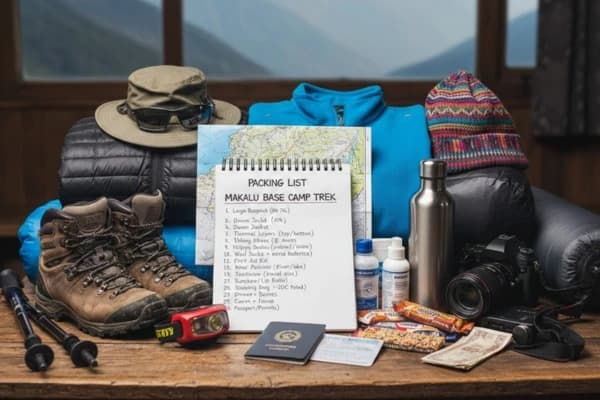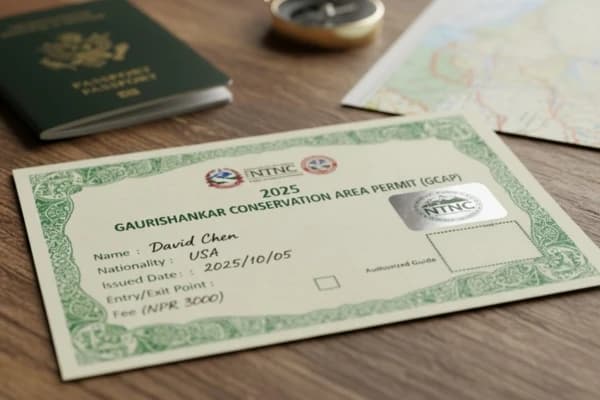Lhotse is the world’s fourth-highest peak, rising to 8,516 meters (27,940 feet) on the Nepal-Tibet border. Part of the Mahalangur Himal range, it sits immediately south of Mount Everest and east of Nuptse. Lhotse is a breathtaking mountain visible from popular trekking routes such as the Everest Base Camp Trek, Gokyo Ri lake, and the Everest Three Passes Trek, while also offering technical challenges for climbers on a Lhotse expedition.
Whether you are a trekker aiming for panoramic Himalayan views or a mountaineer planning Lhotse climbing, this peak promises adventure, culture, and incredible scenery.
Conquer Lhotse with Nepal Gateway Trekking and enjoy expert guides, full support, and an unforgettable Himalayan adventure.
Geographic & Physical Attributes of Lhotse
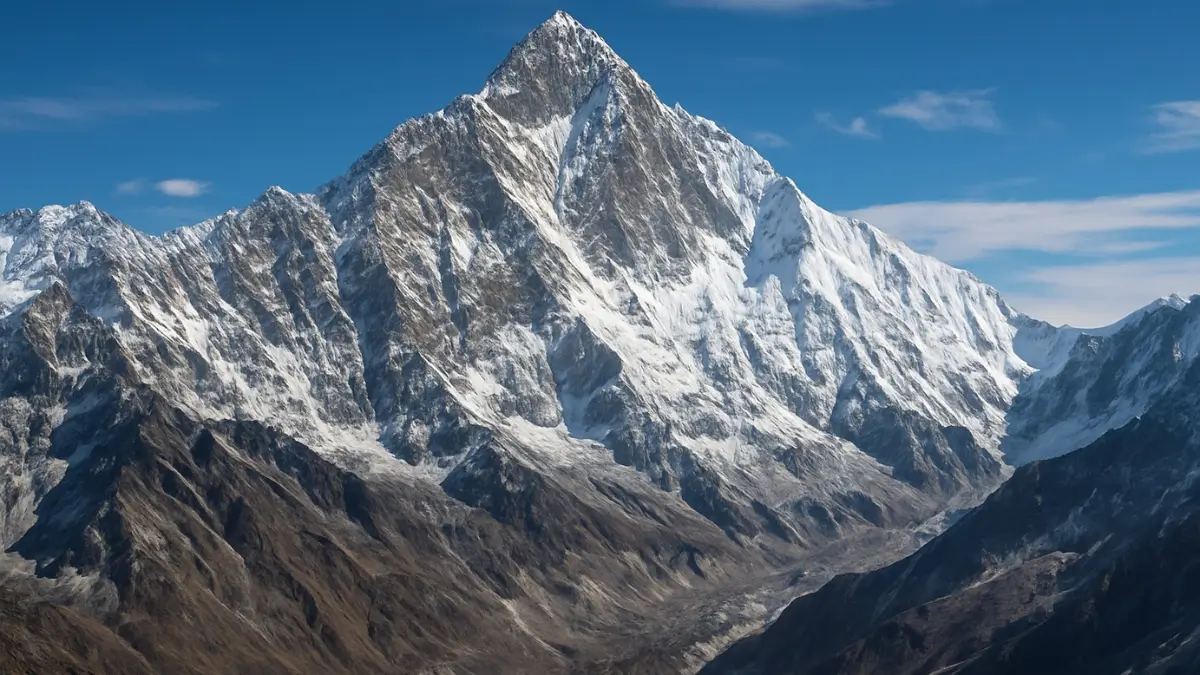
Knowing about Lhotse’s geography and physical features is really important for both trekkers and climbers. Its closeness to Everest, special smaller peaks, and super harsh weather all make the mountain both exciting and challenging.
Where is Lhotse Located?
Lhotse sits on the border between Nepal and Tibet and is part of the Mahalangur Himal range in the Himalayas. Being just south of Everest and east of Nuptse makes it easy for trekkers to see while following the popular trails.
High-altitude trails like the Everest Base Camp Trek, Gokyo Ri Trek, and Everest Three Passes Trek give amazing views of Lhotse without needing any serious climbing skills. But for climbers who want to reach the top, you need special climbing permits for Lhotse and careful planning to get to Lhotse Base Camp.
Height & Prominence
|
Feature |
Lhotse |
Comparison |
| Height |
8,516 m (27,940 ft) |
Everest: 8,848 m, Nuptse: 7,861 m |
|
Prominence |
610 m |
Nuptse: 1,406 m, Everest: 8,848 m |
Even though slightly shorter than Everest, Lhotse is a tough climb with its steep slopes and icy faces.
Sub-peaks of Lhotse
Lhotse has some smaller but important peaks too, like Lhotse Middle (8,410 m) and Lhotse Shar (8,383 m). Lhotse Shar is harder to climb because it’s trickier, but both peaks are awesome for climbers and trekkers looking for extra challenges.
- Lhotse Middle (8,410 m): Often used to help climbers get used to the altitude and sometimes climbed.
- Lhotse Shar (8,383 m): Hard to climb because it’s tricky and needs advanced ice and mixed climbing skills.
These smaller peaks give climbers different paths to try and let trekkers take amazing photos from places like Gokyo Ri lake and other high viewpoints.
Climate & Conditions
The mountain has really harsh alpine weather, with snow, ice, and freezing temperatures all year. Climbers deal with strong winds, low oxygen, and weather that can change super fast. Knowing about these conditions is really important for both trekkers and climbers.
| Season |
Months |
Weather & Conditions |
Base Camp Temp (Day/Night) |
High Camp / Summit Temp |
|---|---|---|---|---|
|
Spring |
March-May |
Stable weather, clear skies, great trekking conditions |
-5°C to -10°C / -15°C |
-10°C to -20°C / -20°C to -30°C |
| Monsoon |
June-August |
Heavy snowfall, landslides, poor visibility |
-5°C to -10°C / -15°C |
-10°C to -20°C / -20°C to -30°C |
| Autumn |
September-November |
Clear skies, stable weather, ideal for trekking |
-5°C to -10°C / -15°C |
-10°C to -20°C / -20°C to -30°C |
|
Winter |
December-February |
Extremely cold, icy conditions, higher risk of frostbite |
-10°C to -15°C / -20°C |
-15°C to -25°C / -25°C to -35°C |
See Lhotse up close on our Everest Trek and enjoy amazing views of the Himalayas
Lhotse Face – The Ultimate Climbing Challenge
Climbing Mount Lhotse is a big adventure that usually takes 45 to 56 days, including trekking to Base Camp, getting used to the altitude, setting up higher camps, and waiting for good weather. The Lhotse Face, a steep icy slope, is one of the hardest parts and usually takes 3 to 4 days to climb, with 1 to 2 days to come back down.
Trekkers can enjoy looking at its huge size, but climbers have to deal with freezing cold, strong winds, thin air, avalanche danger, and tricky ice and rock sections. To succeed, climbers need careful planning, the right gear, good physical training, and sometimes experienced guides to stay safe in the high-altitude and unpredictable Himalayan weather.
Challenge yourself on the Lhotse Face and make your expedition safe and memorable. Contact Nepal Gateway Trekking for your memorable Lhotse Journey.
Overview of the Lhotse Face
The Lhotse Face is a huge 1,125-meter tall wall of hard blue ice on Lhotse’s western side. Climbers use it to reach the Lhotse summit and the Everest South Col. Its steepness, vertical height, and high-altitude exposure make it one of the most famous ice walls in the Himalayas.
Slope & Difficulty
- Average slope: 40-50°
- Steep sections: Up to 80°
- Equipment required: Crampons, ice axes, jumars, fixed ropes, harnesses
- Challenges: Extreme cold, falling ice, crevasses, and high altitude.
Key Landmarks – Yellow Band & Geneva Spur
- Yellow Band: Rocky mid-section on the Lhotse Face requiring careful navigation.
- Geneva Spur: Rocky ridge below South Col, essential for safe passage and photography.
Safety & Climbing Techniques
- Use fixed ropes and jumars on steep walls
- Acclimatize gradually to avoid altitude sickness
- Use supplemental oxygen above 7,000 m
- Rely on experienced Sherpa guides for safety and navigation
Risks & Notable Incidents
- Avalanches, icefall, and crevasses: These are really dangerous.
- 2016 Ang Furba Sherpa accident: Shows that even super-experienced climbers can get into risky situations.
- Overall death rate: About 1-2% of climbers die.
- High-risk climbs: Climbing in winter or trying Lhotse Shar is extra dangerous.
Best Season to Trek or Climb Lhotse
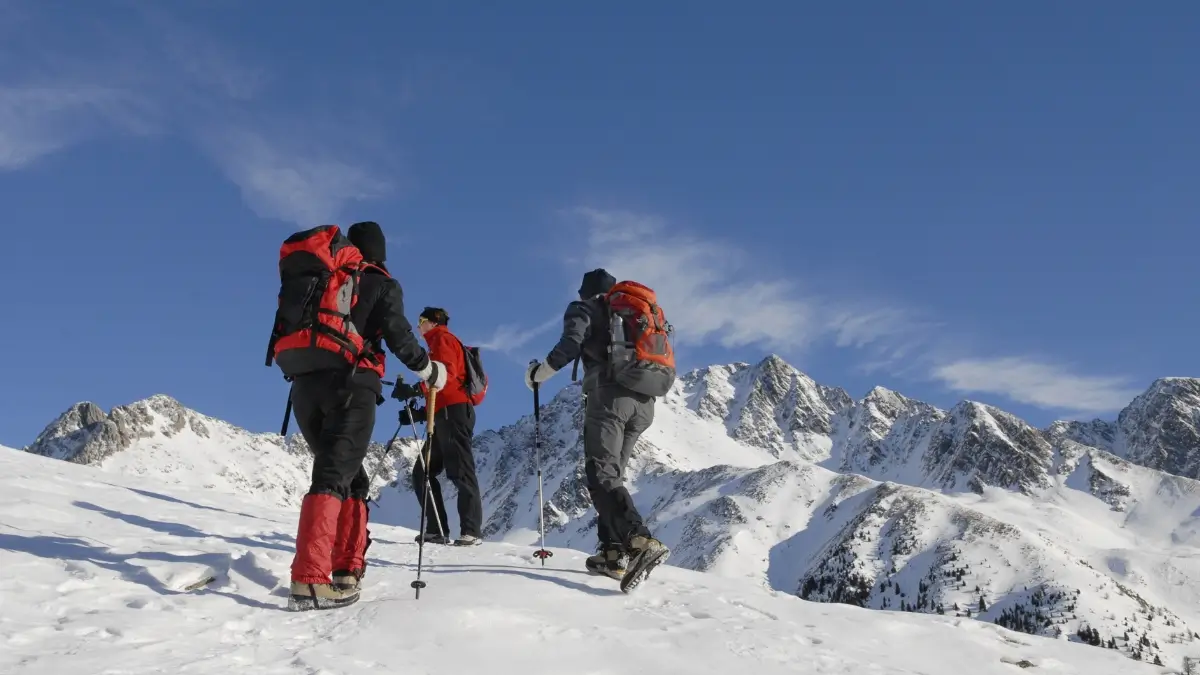
Choosing the right time of year is super important if you want to climb or trek Lhotse safely. The weather can change really fast in the mountains, and picking the wrong season can make climbing much harder and more dangerous.
Spring (March to May) - Best for Climbing and Trekking
Spring is the favorite time for both trekkers and climbers. The weather is steady, days are longer, and it’s not too cold. The trails are full of blooming rhododendron flowers, and you can see the mountains really clearly.
Temperature:
- Base Camp: -5°C to 10°C
- High Camps: -15°C to -25°C
- Benefits: Best weather for climbing, safe conditions, and lots of people on the trails.
Autumn (September to November) - Second-Best Option
Autumn is also a great time to trek or climb because the skies are clear and the weather is not too extreme. The trails are quieter than in spring, so it’s perfect if you want some peace while exploring.
Temperature:
- Base Camp: -5°C to 8°C
- High Camps: -18°C to -28°C
- Benefits: Fresh, crisp air, amazing mountain views, and fewer people on the trails.
Winter (December to February) - Harsh but Peaceful
Winter is very cold and there’s a lot of snow, so climbing is risky. You can still trek at lower altitudes, but you need strong gear and good preparation.
Temperature:
- Base Camp: -15°C to -25°C
- High Camps: Below -30°C
- Benefits: Not many people around and beautiful snow-covered scenery.
Monsoon (June to August) - Not Recommended
Summer monsoon season has lots of rain, cloudy skies, and a high risk of avalanches. Landslides and slippery trails make trekking dangerous.
Temperature:
- Base Camp: 0°C to 12°C
- Drawbacks: Hard to see far, leeches on lower trails, and weather can change quickly.
Take on the challenge of Lhotse with Nepal Gateway Trekking. From base camp treks to summit climbs, we offer full support for a safe and unforgettable adventure.
Trekking Routes & Best Viewpoints for Lhotse
There are several trekking routes to explore around Lhotse, each offering amazing scenery. Along the way, you’ll find viewpoints that give the best mountain views and photo spots.
Everest Base Camp Trek
The Everest Base Camp Trek is an amazing adventure that takes you deep into the Himalayas. Over 12 to 14 days, you’ll climb high altitudes, see amazing mountains, and visit cool places like monasteries and viewpoints with epic views.
- Duration: 12 to 14 days.
- Altitude: 2,860-5,545 m.
- Difficulty: Moderate.
- Highlights: Tengboche Monastery, Dingboche, Kala Patthar with panoramic Lhotse views.
Gokyo Lakes & Gokyo Ri Trek
The Gokyo Lakes & Gokyo Ri Trek is a tough but awesome trek that takes about 14 to 16 days. You’ll explore peaceful trails, see bright blue lakes, and enjoy amazing views of some of the world’s tallest mountains.
- Duration: 14 to 16 days
- Altitude: 5,357 m
- Difficulty: Challenging
- Highlights: Quieter route, turquoise lakes, panoramic views of Lhotse, Everest, Cho Oyu, and Makalu.
Everest High Passes Trek
The Everest High Passes Trek is a super tough but awesome adventure that lasts 18 to 21 days. You’ll hike over three really high passes, that being Renjo La, Cho La, and Kongma La, and get amazing views of Everest, Lhotse, and Makalu.
- Duration: 18 to 21 days
- Passes: Renjo La, Cho La, Kongma La.
- Difficulty: Hard; you need some experience and time to get used to the altitude.
- Highlights: Trekking across Renjo La, Cho La, and Kongma La passes with amazing views of Everest, Lhotse, and Makalu.
Lhotse Base Camp & Combined Treks
The Lhotse Base Camp & Combined Treks can be reached through the Everest Base Camp trek or the Island Peak trips. You need special permits and some prep for the high altitude. It lets you get really close to Lhotse without actually trying to climb to the top.
- Accessed via EBC trek or Island Peak expeditions.
- Requires climbing permits and high-altitude preparation.
- Provides a close-up experience of Lhotse without a full summit attempt.
Practical Trekking Advice
- Permits Required: You need a Sagarmatha National Park permit and a TIMS card for trekking. As well as a Lhotse climbing permit if you plan to attempt the summit.
- Gear: Bring warm clothing, trekking poles, and crampons for icy or high-altitude sections according to how high you plan to reach.
- Safety Tips: Go slowly to acclimatize, watch for altitude sickness (AMS), and rely on Sherpa guidance for navigation and help in emergencies
History & Expeditions of Lhotse
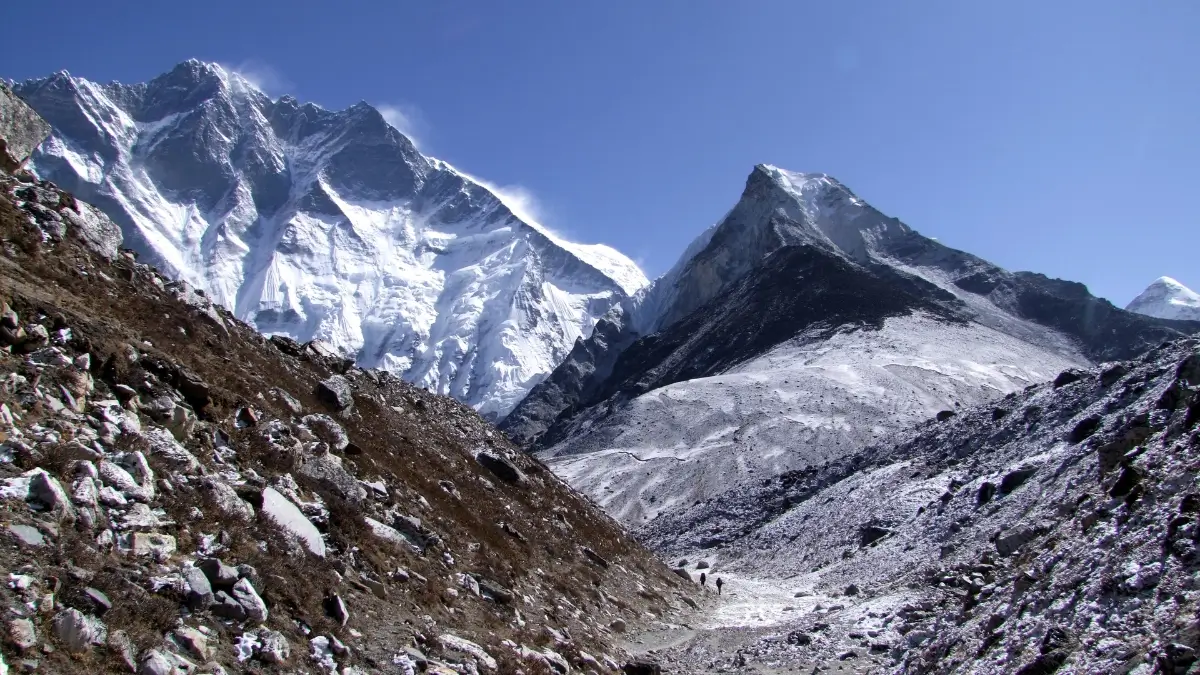
Lhotse has a rich history of climbing, with many famous expeditions over the years. Learning about these adventures shows how tough and exciting climbing this mountain can be.
First Ascent
Lhotse was first climbed in 1956 by Swiss climbers Ernst Reiss and Fritz Luchsinger. They reached the top using the South Col route, which is the same path climbers often take when going to Everest.
This climb was a big deal because it was the first time anyone had stood on Lhotse’s summit, showing that people could tackle some of the world’s highest and toughest mountains. Their teamwork, careful planning, and dealing with freezing temperatures and thin air made it a historic achievement in Himalayan climbing.
Notable Climbers & Expeditions
- First Winter Ascents: The first winter climb of Lhotse was done by Polish climber Krzysztof Wielicki on December 31, 1988. This showed that people could survive and reach the summit even in the coldest, toughest season.
- Fastest Climbs & Youngest Climbers: Nepali climber Mingma Dorchi Sherpa set the record for the fastest back-to-back summits of Everest and Lhotse in just 6 hours and 1 minute. Indian climber Arjun Vajpai became the youngest person to reach Lhotse’s summit at 17 years old, proving that young climbers can also achieve big mountain goals.
- Female First Ascents: French climber Chantal Mauduit was the first woman to summit Lhotse. Her climb opened the way for more women to become mountaineers and showed that women can handle high-altitude challenges, too.
- Sherpa Support: Sherpas are super important for any Lhotse climb. They guide the route, manage ropes, carry heavy loads, and help climbers. For example, Nima Rinji Sherpa became the youngest person to climb all 14 eight-thousanders at just 18 years old, showing how skilled Sherpas are at climbing and supporting others.
Preparing for a Lhotse Expedition
Preparing for a Lhotse expedition needs some planning and practice. You need ample gear, a good fitness level, and some knowledge about the trail and conditions to stay safe. Here’s how you can prepare for your Lhotse expedition.
Physical Fitness & Training
- Beginners: Start with basic endurance exercises, stair climbing, and short hikes. Gradually build leg strength and improve your cardio.
- Experienced trekkers: Do weighted backpack hikes for longer treks. Add in some technical climbing practice to prepare for tougher sections.
- All climbers: Take staged climbs to prevent altitude sickness (AMS), and maintain regular cardio and strength training to stay safe on Lhotse climbing routes.
Essential Gear for Climbing Lhotse
|
Gear Type |
Items |
|---|---|
|
Technical |
Ice axes, crampons, jumars, ropes |
|
Clothing |
Insulated jackets, base layers, gloves, and a balaclava |
|
Oxygen |
Cylinders, masks, regulators |
|
Trekking |
Boots, trekking poles, backpack, sleeping bag |
|
Safety |
Helmet, harness, avalanche gear, first aid kit |
Acclimatization & High-Altitude Safety
Above 3,000 meters, trekkers can get Acute Mountain Sickness (AMS) because there’s less oxygen. Signs include headaches, feeling sick, dizziness, and tiredness. If it gets worse, it can turn into HAPE (fluid in the lungs) or HACE (swelling in the brain), which can be very dangerous.
- Gradual altitude gain with staged rest days
- Monitor for AMS, HAPE, HACE
- Supplemental oxygen is recommended above 7,000 m
- Proper hydration, nutrition, and pacing are critical
- High-altitude insurance and an emergency evacuation plan are essential
Local Culture & Travel Experiences in Lhotse
Visiting Lhotse is more than just climbing the mountain. Along the way, you get to explore remote villages, meet local people, and learn about their traditions. You get to see how they live at high altitudes, the food, festivals, and daily life they spend in the high mountains. It gives you a real feel for mountain culture that makes the whole journey unforgettable.
Sherpa Guides
Sherpas are highly experienced guides and are essential for trekking and climbing the Lhotse. Sherpas knows the mountains, understand the weather, and use special high-altitude climbing skills to keep everyone safe. They also manage ropes, and organize the whole expedition for success.
Nearby Villages & Cultural Highlights
- Namche Bazaar: The main place trekkers stop, with lots of shops and local food.
- Tengboche Monastery: A peaceful place with awesome views of Lhotse.
- Festivals: The Mani Rimdu festival is a fun way to see and join in local culture.
- Food & Stays: Try traditional dal bhat and momos, and sleep in comfy tea houses and lodges on the trek.
Comparisons & Related Peaks
| Peak | Height | Difficulty |
Popularity |
|---|---|---|---|
|
Everest |
8,848 m |
Moderate-High |
Very High |
|
Lhotse |
8,516 m |
High | Medium |
|
Nuptse |
7,861 m |
Moderate |
Low |
|
Makalu |
8,463 m |
High |
Medium |
|
Cho Oyu |
8,201 m |
Moderate |
Medium |
- Lhotse vs Everest: Lhotse (8,516 m) is harder to climb because its slopes are steeper and trickier. Everest (8,848 m) is taller, but it’s super crowded since lots of people try to climb it.
- Lhotse vs Nuptse: Lhotse has really steep ice walls that make climbing tough. Nuptse (7,861 m) isn’t as steep, so it’s easier in comparison.
- Nearby Giants: From trekking spots near Lhotse, you can see other huge mountains like Makalu (8,485 m) and Cho Oyu (8,188 m). They’re massive and make the views around Lhotse even more amazing.
Cost, Permits & Practical Travel Tips
Climbing or trekking near Lhotse needs good planning. You should know how much guides, gear, and places to stay cost, and make sure to get the right climbing permits. There are also useful travel tips, like the easiest way to reach base camps and how to stay safe in the high mountains.
Climbing Permits & Costs
- Lhotse climbing permit: USD 1,800+
- Sagarmatha National Park permit: NPR 3,000-3,500
- TIMS Card (Trekkers’ Info Card): NPR 2,000
- Other stuff to know: Some permits might ask if you have experience climbing high mountains. Permit fees don’t include guides or helpers.
Climbing Expedition Costs & Logistics
- Cost of a climb: Around USD 25,000-40,000+, which covers Sherpa helpers, oxygen, and other things for the trip.
- Sherpas: They set up ropes, guide the route, and keep everyone safe at high heights.
- Other logistics: Food, carrying gear, base camp setups, and radios or satellite phones for communication.
Trekking Costs & Accommodation
- Cost for trekking: Lodges, tea houses, or camping usually cost USD 800-1,500 for 12 to 16 days.
- Facilities: Popular trails have better facilities, while quieter places like Gokyo Ri are simpler.
- Extra expenses: Meals, hot showers, small local transport, or porter fees may add a bit more.
Health & Safety Precautions
- Go slowly to help your body get used to the altitude and avoid sickness.
- Watch out for serious problems like HAPE (lungs) and HACE (brain).
- Get emergency evacuation insurance just in case.
- Drink lots of water, take rest days, eat energy food, and pace yourself.
- Carry a small first-aid kit and medicines for altitude sickness.
Photography & Scenic Highlights
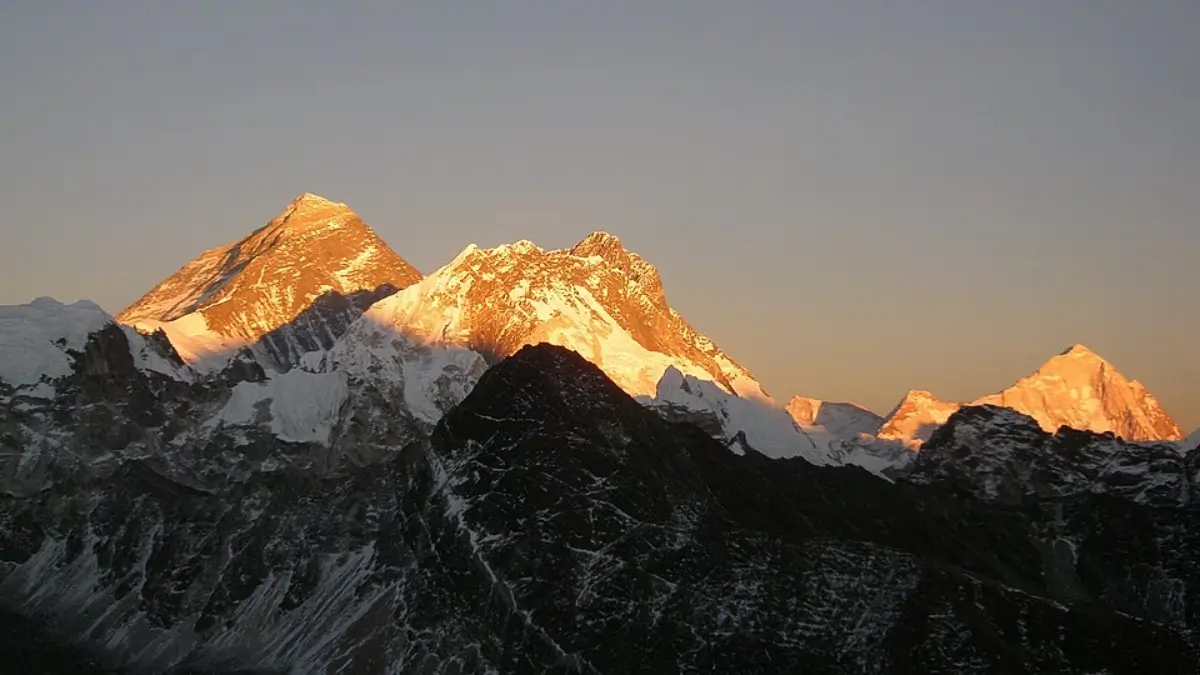
Trekking near Lhotse gives you some of the coolest and panoramic photo spots in the Himalayas. The best places to take pictures are Kala Patthar, where you get amazing close-up views of Everest and Lhotse, Gokyo Ri lake. With its bright blue water reflecting the mountains, and Tengboche Monastery, which looks peaceful with the mountains behind it.
For the best photos, go early in the morning when the sun rises and the sky is clear. Use a wide-angle lens to capture the huge landscapes, and make sure to save your camera batteries because the cold drains them fast. Also, keep your camera safe from snow, moisture, and dust. With so many awesome views, taking photos properly will help you remember your trek forever.
Final Thoughts
From the steep ice wall of the Lhotse Face to trekking at Gokyo Ri and Everest Base Camp, Lhotse has adventures for everyone. You can mix high-altitude climbing with visiting Sherpa villages to see the mountains and local culture up close.
Plan your Lhotse trek or climb with Nepal Gateway Trekking today and get a chance to see the world’s fourth highest mountain like never before!
FAQ
What is the height of Lhotse, and where is it located?
Lhotse is 8,516 meters (27,940 ft) tall and sits on the Nepal-Tibet border as part of the Mahalangur Himal range. It is the fourth-highest mountain in the world.
Can I see Lhotse without climbing it?
Yes. Popular trekking routes like the Everest Base Camp Trek, Gokyo Ri Trek, and Kala Patthar let you see amazing views of Lhotse without having to do any technical climbing.
What is the Lhotse Face and why is it famous?
The Lhotse Face is a 1,125-meter-tall ice wall on Lhotse’s western side. It’s famous for being very steep and hard to climb, and it’s an important part of both Lhotse and Everest climbing routes.
Which trekking route is best to view Lhotse?
The Everest Base Camp Trek and Gokyo Ri Trek are the most popular and give clear, wide-open views of Lhotse.
Is climbing Lhotse harder than Everest?
Technically, yes. Lhotse is steeper, has tougher ice walls, and fewer camps than Everest, which makes it a harder climb even though it’s a little shorter.
When is the best season to trek or climb Lhotse?
The best times to visit Lhotse are the Spring (March to May) and Autumn (September to November) seasons. Winter is extremely cold, and the monsoon season has heavy snow and poor visibility, so these two seasons are not really recommended.
Do I need a guide or Sherpa to trek near Lhotse?
Yes, hiring an experienced Sherpa guide is necessary. They ensure your safety, help with navigation, and provide crucial high-altitude support, especially if you plan to climb or trek in challenging areas.
What permits are required for trekking and climbing Lhotse?
To trek near Lhotse, you must have a Sagarmatha National Park permit and a TIMS card. If you want to climb to the summit, a Lhotse climbing permit is required. These permits help keep trekkers safe, organize climbing and trekking activities, and protect the mountains and environment.
How much does a Lhotse expedition cost?
Expeditions on Lhotse usually cost between $25,000 and $40,000 or more. This covers logistics such as food, gear transport, and setting up base camps, experienced Sherpa support for guiding, managing ropes, and ensuring safety, and supplemental oxygen for high-altitude climbing. Additional costs may include permits, insurance, and equipment rental, depending on how long the expedition lasts and the type of climb you choose.


